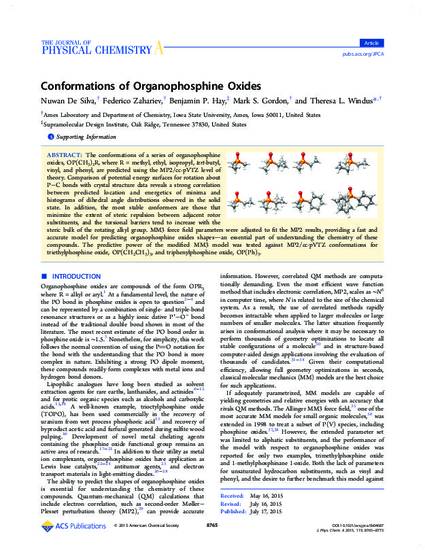
The conformations of a series of organophosphine oxides, OP(CH3)2R, where R = methyl, ethyl, isopropyl, tert-butyl, vinyl, and phenyl, are predicted using the MP2/cc-pVTZ level of theory. Comparison of potential energy surfaces for rotation about P–C bonds with crystal structure data reveals a strong correlation between predicted location and energetics of minima and histograms of dihedral angle distributions observed in the solid state. In addition, the most stable conformers are those that minimize the extent of steric repulsion between adjacent rotor substituents, and the torsional barriers tend to increase with the steric bulk of the rotating alkyl group. MM3 force field parameters were adjusted to fit the MP2 results, providing a fast and accurate model for predicting organophosphine oxides shapes—an essential part of understanding the chemistry of these compounds. The predictive power of the modified MM3 model was tested against MP2/cc-pVTZ conformations for triethylphosphine oxide, OP(CH2CH3)3, and triphenylphosphine oxide, OP(Ph)3.
Available at: http://works.bepress.com/mark_gordon/387/

Reprinted (adapted) with permission from Journal of Physical Chemistry A 119 (2015): 8765, doi:10.1021/acs.jpca.5b04687. Copyright 2015 American Chemical Society.